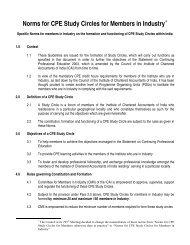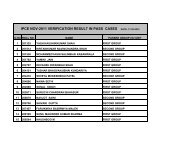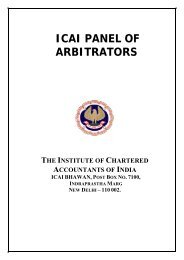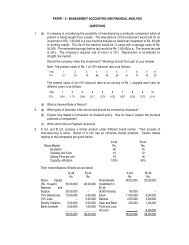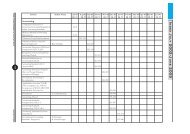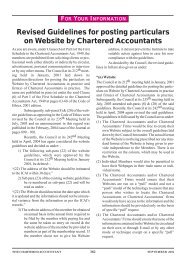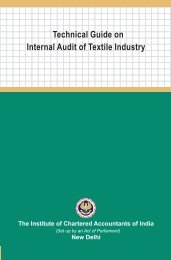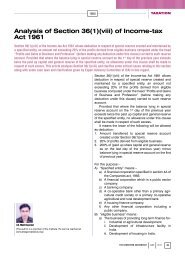(AS) 19
(AS) 19
(AS) 19
You also want an ePaper? Increase the reach of your titles
YUMPU automatically turns print PDFs into web optimized ePapers that Google loves.
366 <strong>AS</strong> <strong>19</strong> (issued 2001)<br />
4. The definition of a lease includes agreements for the hire of an asset<br />
which contain a provision giving the hirer an option to acquire title to the<br />
asset upon the fulfillment of agreed conditions. These agreements are<br />
commonly known as hire purchase agreements. Hire purchase agreements<br />
include agreements under which the property in the asset is to pass to the<br />
hirer on the payment of the last instalment and the hirer has a right to<br />
terminate the agreement at any time before the property so passes.<br />
Classification of Leases<br />
5. The classification of leases adopted in this Statement is based on the<br />
extent to which risks and rewards incident to ownership of a leased asset lie<br />
with the lessor or the lessee. Risks include the possibilities of losses from<br />
idle capacity or technological obsolescence and of variations in return due to<br />
changing economic conditions. Rewards may be represented by the<br />
expectation of profitable operation over the economic life of the asset and of<br />
gain from appreciation in value or realisation of residual value.<br />
6. A lease is classified as a finance lease if it transfers substantially all the<br />
risks and rewards incident to ownership. Title may or may not eventually be<br />
transferred. A lease is classified as an operating lease if it does not transfer<br />
substantially all the risks and rewards incident to ownership.<br />
7. Since the transaction between a lessor and a lessee is based on a lease<br />
agreement common to both parties, it is appropriate to use consistent<br />
definitions. The application of these definitions to the<br />
differing circumstances of the two parties may sometimes result in the<br />
same lease being classified differently by the lessor and the lessee.<br />
8. Whether a lease is a finance lease or an operating lease depends on the<br />
substance of the transaction rather than its form. Examples of situations<br />
which would normally lead to a lease being classified as a finance lease are:<br />
(a) the lease transfers ownership of the asset to the lessee by the<br />
end of the lease term;<br />
(b) the lessee has the option to purchase the asset at a price which is<br />
expected to be sufficiently lower than the fair value at the date<br />
the option becomes exercisable such that, at the inception of the<br />
lease, it is reasonably certain that the option will be exercised;




